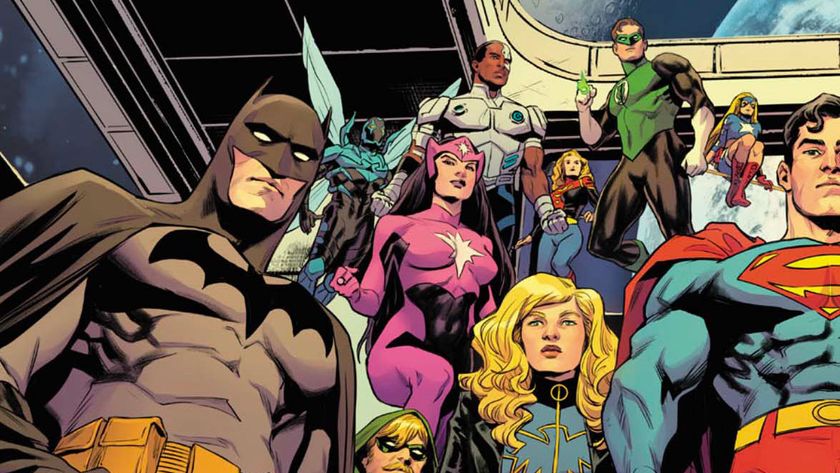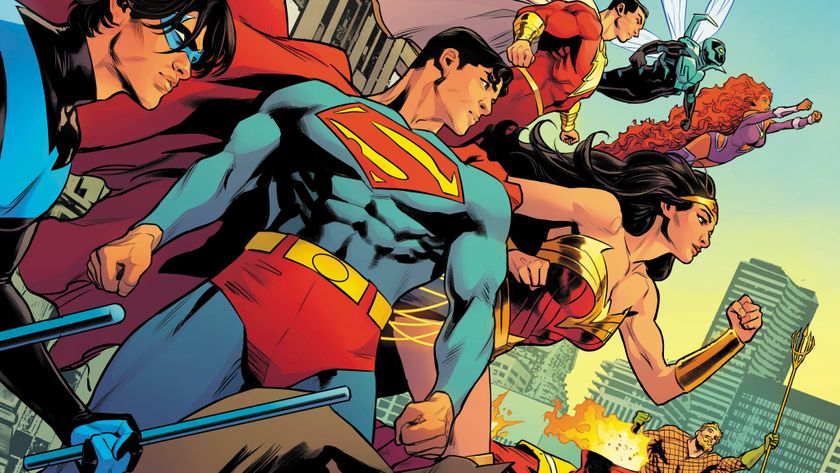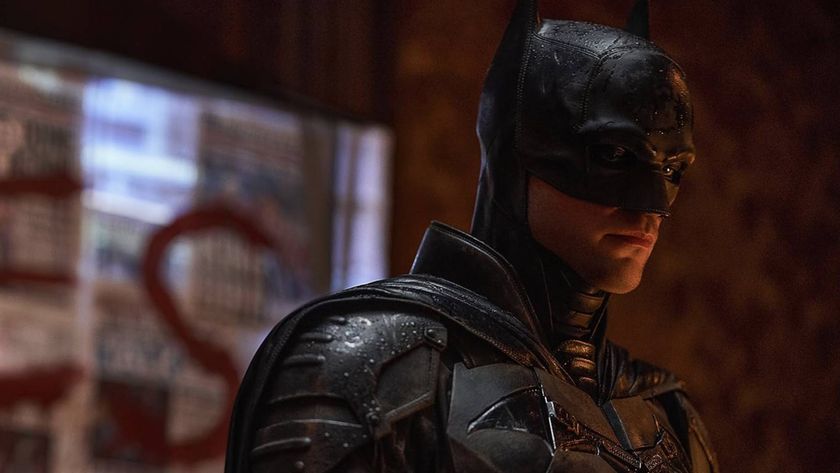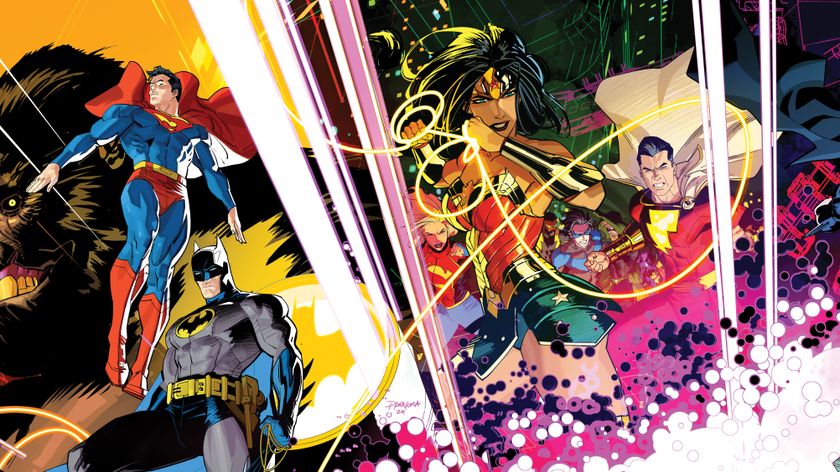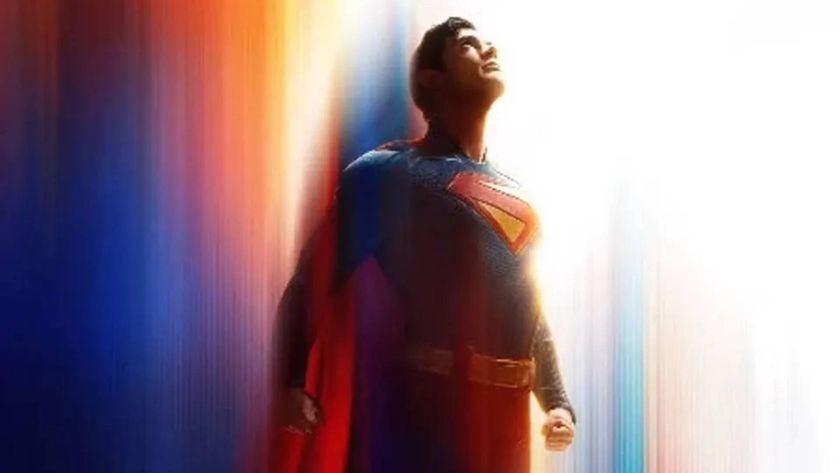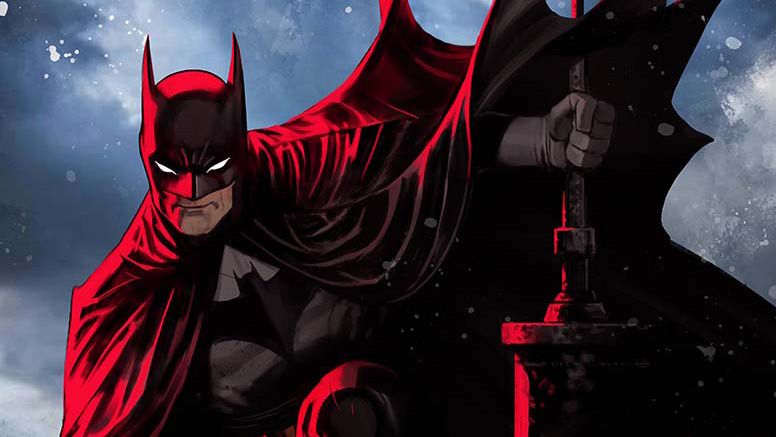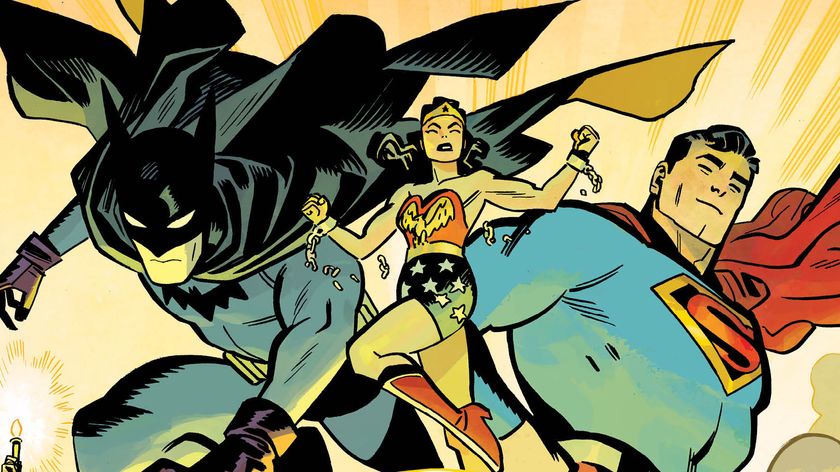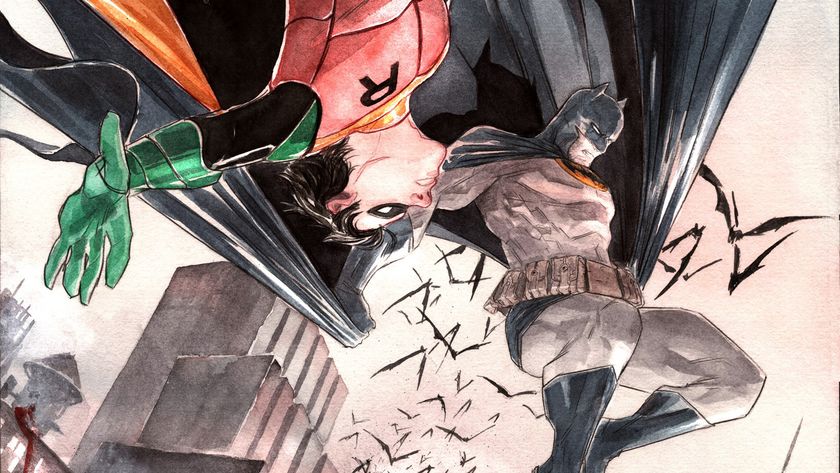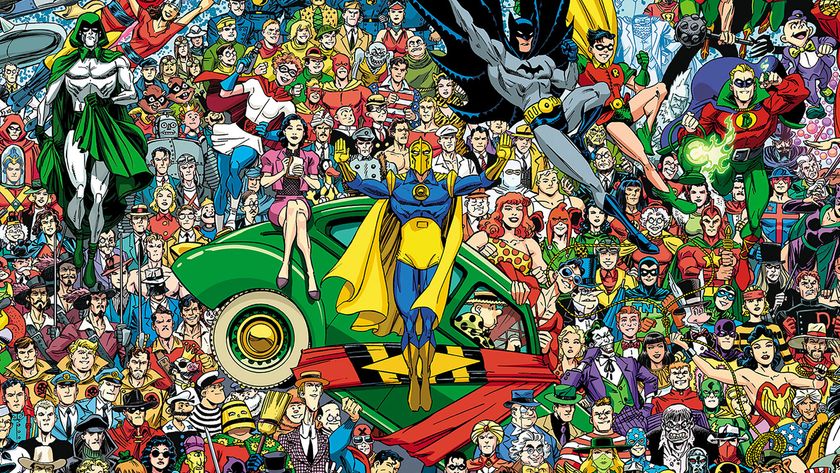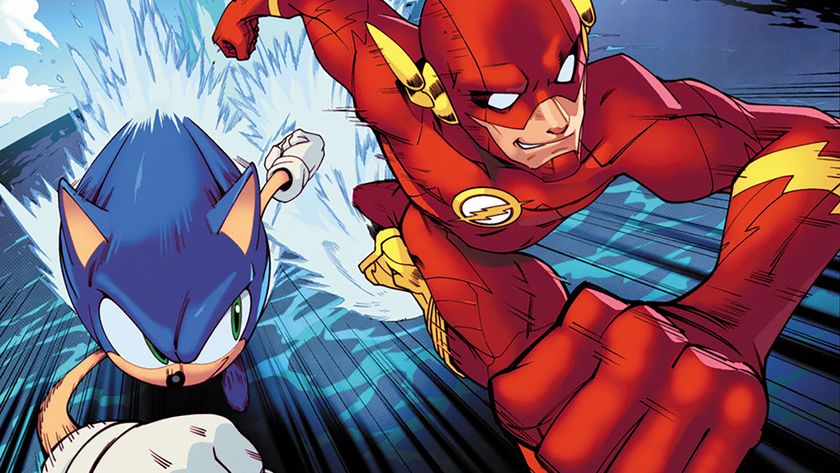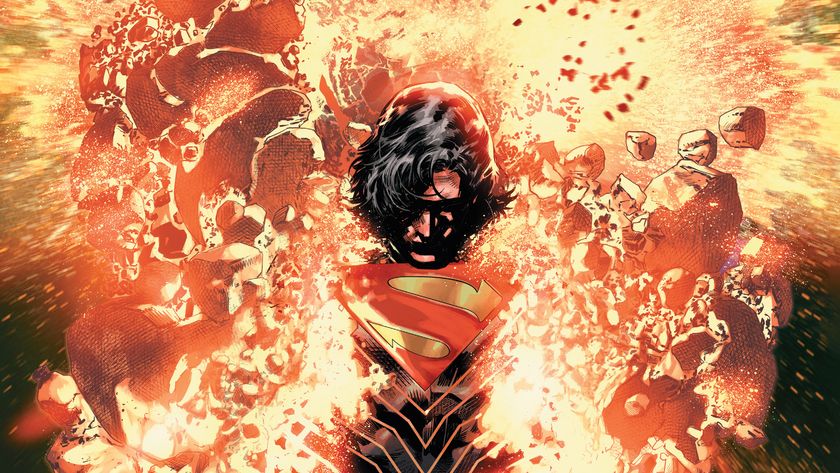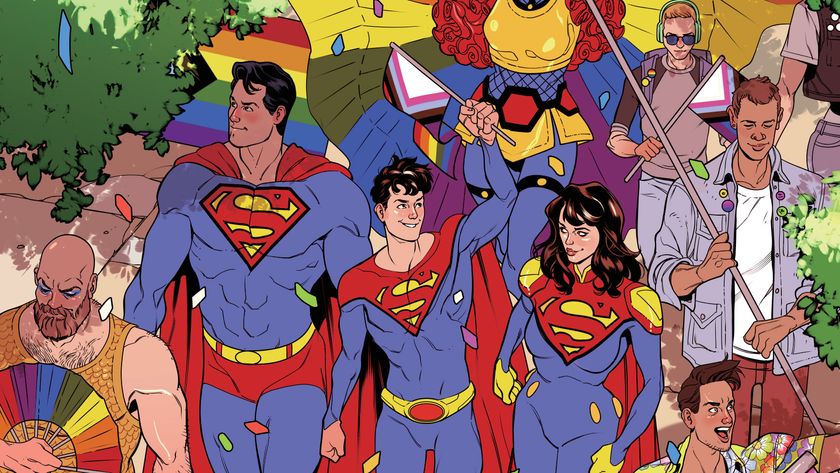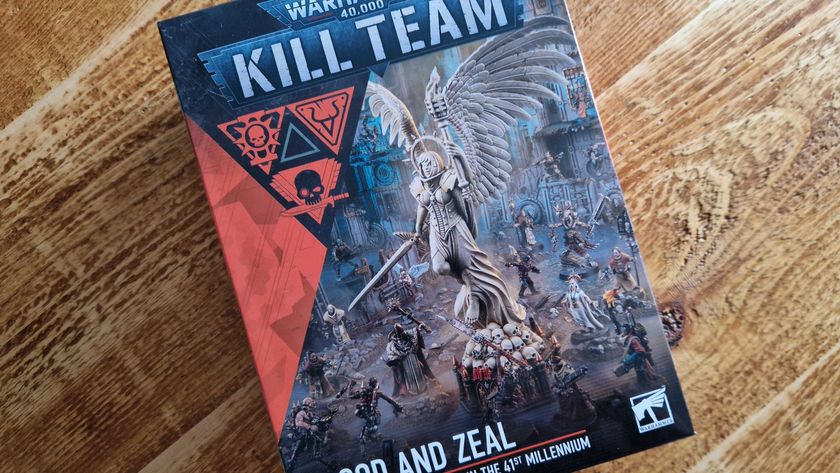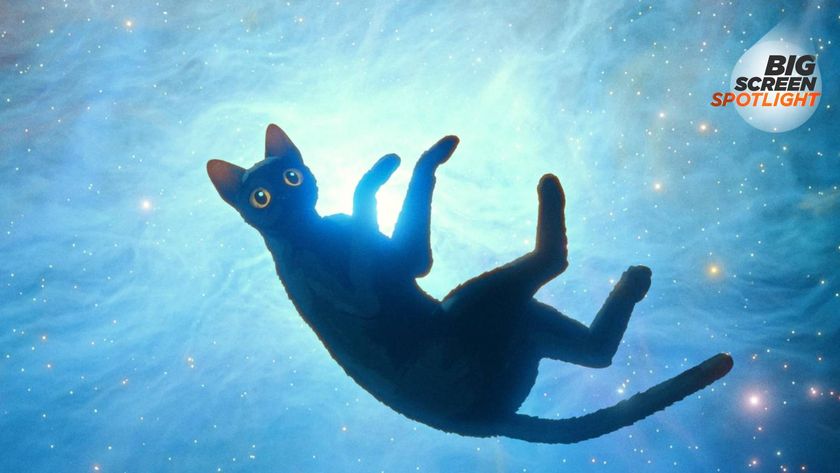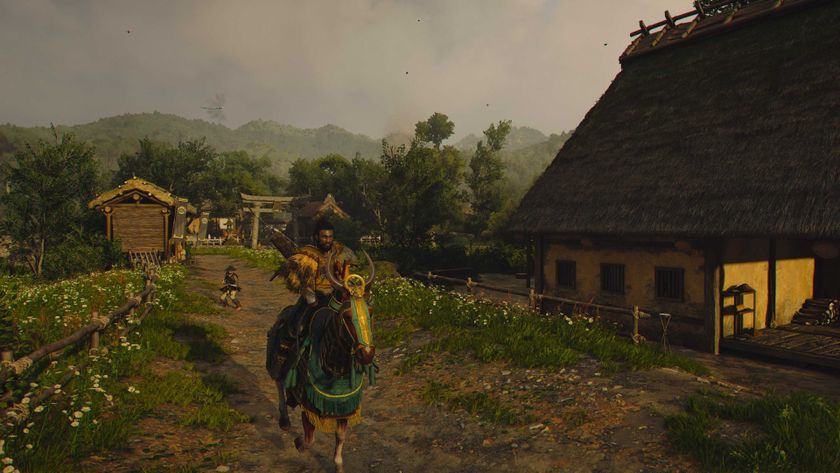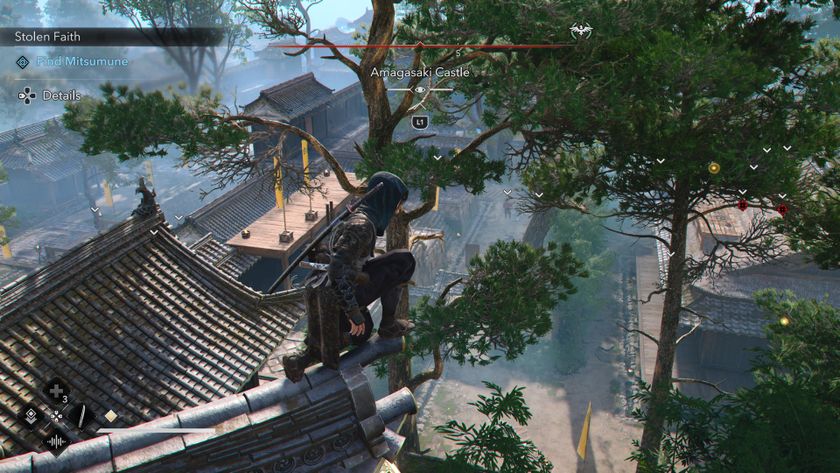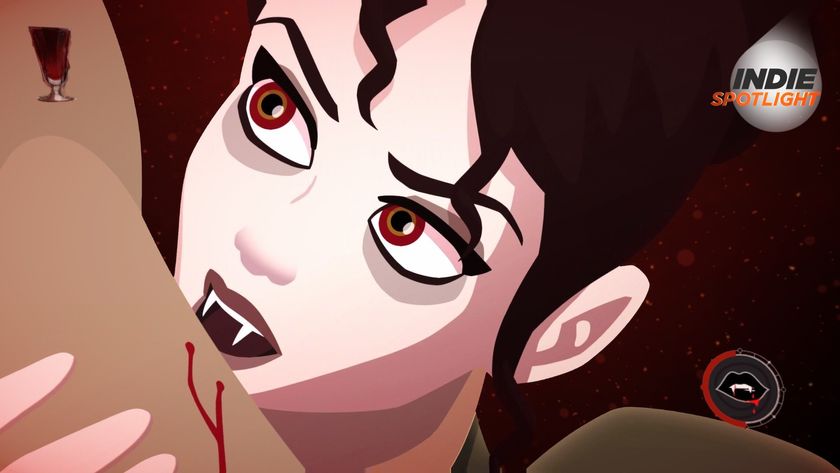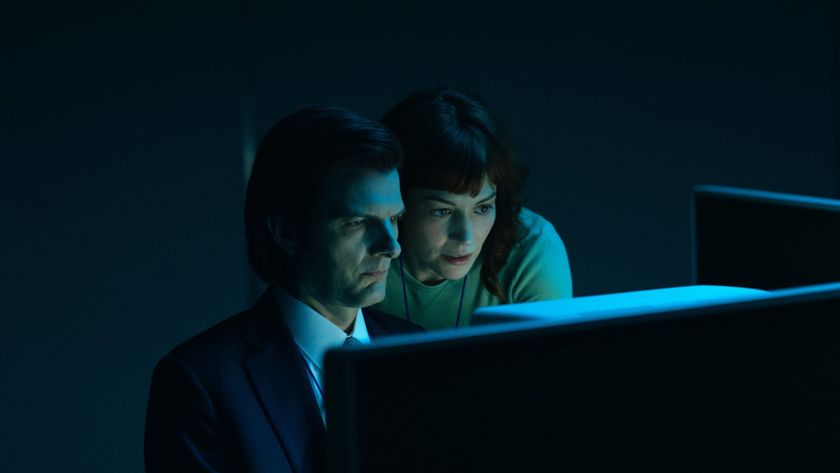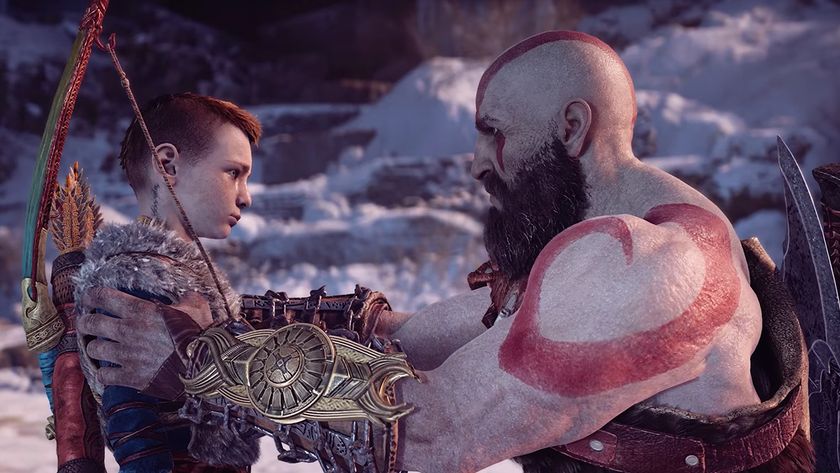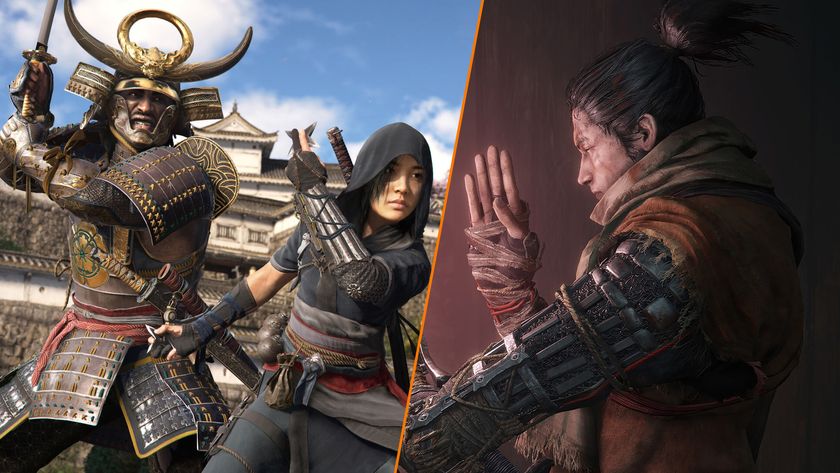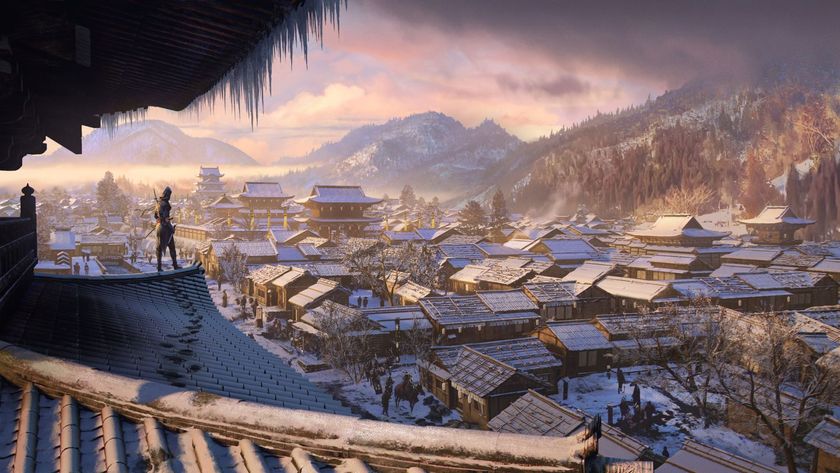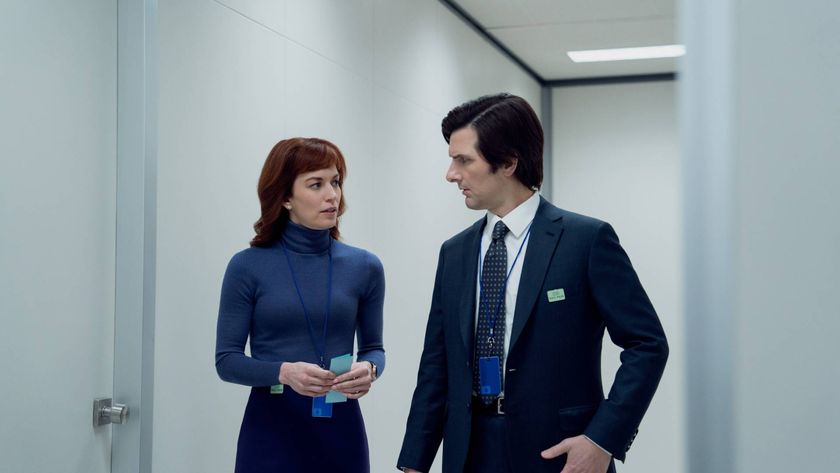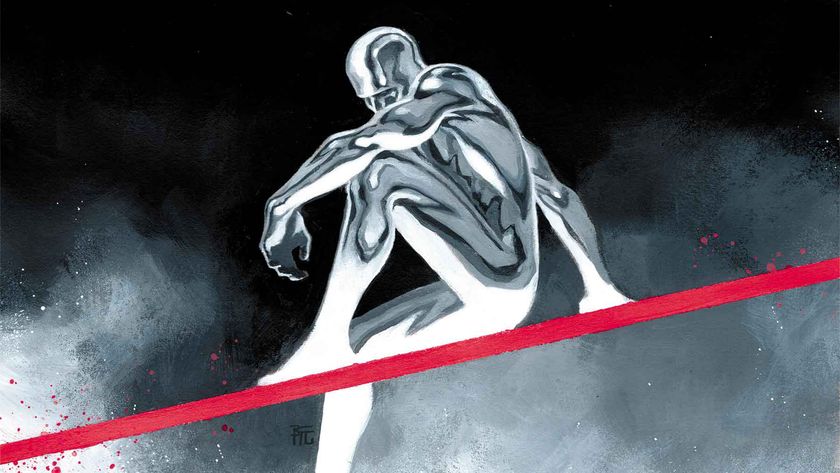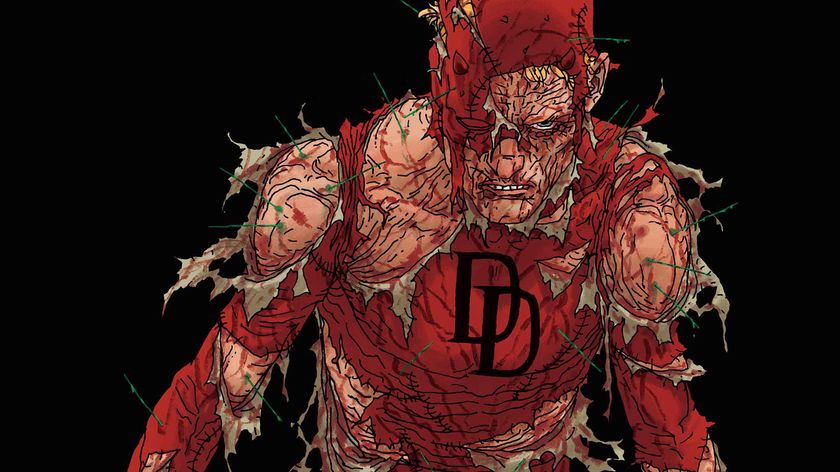The DC Universe in 2022 explained
A field guide to the new DC Universe ... or should we say Omniverse including its newest, baddest bad guy
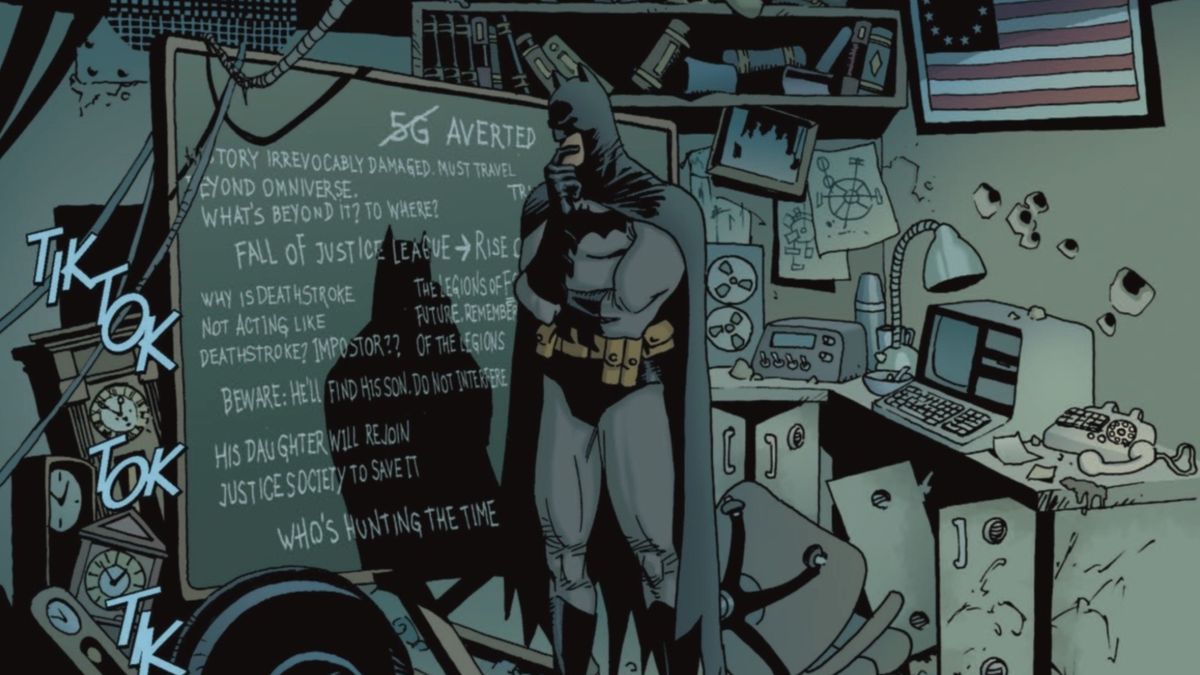
DC is now well into its current 'Infinite Frontier' status quo, in which every story that has ever been told in a DC comic is considered to be canon in some way, shape, or corner of the Multiverse - or should we say, 'Omniverse.'
Infinite Frontier was also the name of a March 2021 special Infinite Frontier #0 which was itself the prelude to a follow-up six-issue Infinite Frontier limited series later in 2021. That story established that DC's Multiverse can now be considered an 'Omniverse,' where many different aspects of reality come together.
More recently, in April 12's Flashpoint Beyond #0, a new term for the entirety of DC comic book continuity was coined: the 'Divine Continuum.' (Get it? DC?). The 'Divine Continuum' seems to be a term to encompass the Multiverse, Omniverse, Linearverse, and all other aspects of DC continuity in a larger sense.
As we first detailed in 2021, 'Infinite Frontier' raised far more questions about the current nature of the DC Universe and the status of the heroes that inhabit it than provided answers, seemingly by design. And what appeared to be huge developments in the final pages of Dark Nights: Death Metal to seed new stories for the most part have yet to be followed up on to any significant degree.
But we'll get to that in a moment.
There are still a few data points about the status quo of the current version of the DCU that seem to be on solid ground worth detailing.
Formerly a multiverse, filled with 52 alternate Earths, the DCU is now an omniverse, basically a Multiverse of multiverses.
Comic deals, prizes and latest news
Get the best comic news, insights, opinions, analysis and more!
Although that said, DC hasn't exactly gotten to really exploring the new DC Omniverse concept yet.
So for those of you who passed over 2020-2021's Dark Nights: Death Metal, Newsarama has an overview of the status quo of the DC Universe in 2021 and now 2022, until at least that gets all rewritten again in what we expect will be a new large-scale DC Crisis event sometime this year.
But we're getting ahead of ourselves.
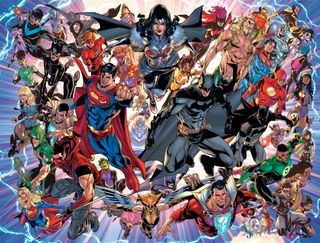
1. The DC Multiverse is now a DC Omniverse
As we were saying...
Briefly recapping Dark Nights: Death Metal, the events of the series more or less destroyed the bulk of what was the known DC Multiverse - essentially 52 universes that each contained an Earth somewhat different than the main Earth (Earth-0 or Earth-Prime) most DC titles like Batman and Action Comics takes place on.
Most of the 52 Earths contained twists on familiar DC touchstones. Earth-3 for example was sort of a mirror Earth in which Wonder Woman, Batman, and Superman are supervillains rather than superheroes.
Earth-22 is the home of the events of the landmark 1996 series Kingdom Come.
Not only were all of the 52 Earths of the previously-known multiverse destroyed during Dark Nights: Death Metal restored, in some cases, they were also reborn as new versions (including Earth-3 that features in a new iteration of The Crime Syndicate) and new Earths were/are being created expanding upon the 52 that's been more or less canon since Grant Morrison's The Multiversity.
At least, DC readers were told new Earths were being created. None have really been seen in a prominent story since then.
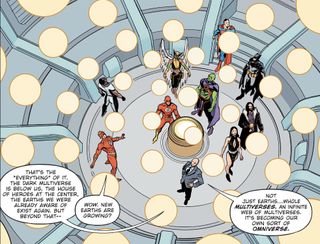
And not only that, there are now multiple multiverses in what's now a DC Omniverse. A wall that used to section off the 52 known universes from the greater Omniverse of countless universes no longer exists and there are no longer any boundaries.
In other words, where there was once one Earth-0 in the Multiverse, there is now theoretically multiple Earth-0s in the Omniverse, which may require new terminology (Multiverse-0? Earth-0a?)
But again, as of April 2022, one-year later-plus, DC readers haven't seen much of a practical application of a larger DC Omniverse versus a mere DC Multiverse.
And oh yeah ... the people who live in the DC Universe - even some of the ordinary citizens - are now aware they live in a multiverse, although some of them are either unaware or are in denial of the fact, another new continuity wrinkle that really hasn't been exploited.
What's more, April 10's Flashpoint Beyond #0 introduced the term 'Divine Continuum' as a way to refer to all the overarching aspects of DC comic book continuity as an all-encompassing concept.
So where that goes exactly still remains to be seen as of April 2022.
2. Earth-0 is no longer the center of the Multiverse
Meaning 'Multiverse-Prime' (our term, not DC's). That designation belongs to two mysterious sources of energy, one of which is referred to as a likely Earth - an "Alpha world" - given the name 'Elseworld,' a familiar term to DC readers, of course, that refers to alternate DC realities and futures like Kingdom Come and Justice League: The Nail.
Elseworld was seemingly supposed to be at the center of a new title DC announced in February 2021 it would publish that year, although no title called Elseworlds or a title that seems like it would have been called Elseworlds was released in 2021 or has yet to be solicited.
So since January 2021, little else has been revealed about Elseworld, other than it has an opposite world, Earth Omega.
Earth Omega was meant to be sort of a prison world where the Universe's greatest threats are contained and held in check - "a place of endings."
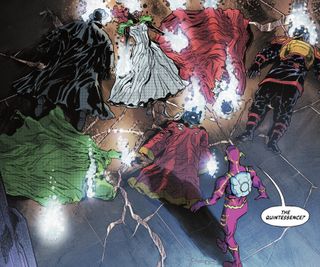
And yes, Earth Omega, as the term implies, was meant to be a prison for DC's once preeminent cosmic threat Darkseid, with the Quintessence, a group of higher DC beings including the Greek god Hera, Phantom Stranger, the Wizard, Highfather, Ganthet, and the Spectre that oversee the DC Omniverse - its wardens.
But there was an immediate flaw in the Omega Earth plan.
Darkseid seemingly murdered them all the Quintessence, then delivered a two-page meta-textual soliloquy declaring that he was made into lesser forms of himself since the first Crisis of Infinite Earths, but the birth of the new Omniverse resulted in all of his past aspects merging into one, his true form, and his power now exceeds what it was before the original Crisis.
While acknowledging the new DC Multiverse is infinite, Darkseid declares to himself that he is finite and that he is final.
As we mention several times in this story, that seemed to be the driving force behind an upcoming new Crisis event. But there's been a new development.
We'll get to that in a moment.
3. The new super-SUPER team
The new DC Universe has a new superteam called the Totality - a sort of DCU all-star roster of superheroes and supervillains that is described as "a shield protecting our world from future threats, manned by its greatest minds."
The team is housed in a headquarters on the dark side of the Moon and is "the next stage of the Halls of Justice and Doom."
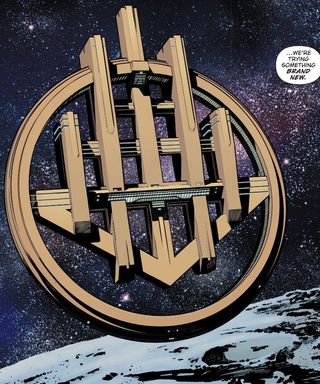
Its members include Hawkgirl, Mr. Terrific, Martian Manhunter, Talia al Ghul, Vandal Savage, and Lex Luthor.
And Alan Scott, the original Green Lantern with a new lease on life, serves as a "Sentinel" - a sort of head of security - for the team.
The Totality was featured - albeit not prominently - in the Infinite Frontier limited series.
That said, the Totality, despite what seemed to be the promise of its high-profile line-up and the scope of its mission, was not a prominent presence in the DC Universe in 2021 or so-far in 2022.
It, like much of what came out of Dark Nights: Death Metal, was a seed that hasn't sprouted yet.
But hold the Bat-phone, DC has declared nine of the ten core Justice Leaguers including the 'trinity' of Wonder Woman, Batman, and Superman will die on a mission in space relating to this upcoming next Crisis in the pages of April's Justice League #75, and that their deaths and the disbanding of the League as a result won't be just a temporary blip and could be status quo for a little while.
This will leave a power vacuum in the DCU and as Newsarama has already speculated, the Totality is one of the more logical candidates to fill the void and finally deliver on its promise as a significant new entity on Earth-Prime.
4. The map is back
In explaining the new structure of 'Multiverse Prime' (again, our term) the map of the Multiverse circa 2014 and Grant Morrison's The Multiversity made a cameo appearance in Dark Nights: Death Metal #7 and again in Infinite Frontier #2, along with The Multiversity: Guidebook, which is a comic book guide to the DC Multiverse that actually exists in the Multiverse as a guide to the heroes that inhabit it.
Got that?
The House of Heroes is the home base of the aforementioned Justice League Incarnate, a sort of Justice League all-star team made up of heroes from around the Multiverse, including Calvin Ellis (otherwise known as President Superman), the Man of Steel of Earth-23, and currently Flashpoint Batman - a Thomas Wayne from the Flashpoint reality who became Batman after Martha and Bruce were murdered in Crime Alley.
And Flashpoint Batman joined to search for Barry Allen-the Flash, who in Dark Nights: Death Metal #7 accepted Justice League Incarnate's offer to be Earth-0's representative on the team whose task it is to explore and map the new Omniverse.
Due to Barry's new commitment, he told Wally West (seemingly fully recovered from the events of Heroes in Crisis and his time as a new omnipotent being up until the conclusion of Death Metal) that Wally should once again take over the mantle of Central City's the Flash, which he's done since as the star of The Flash monthly series since.
As to that 'search for Barry,' his tenure in the Justice League Incarnate lasted about a minute, which you can read more about in our recap of Infinite Frontier #1.
Briefly, Barry's lost beyond the known DC Multiverse, a plot element in the upcoming 'Death of the Justice League' and subsequent 'Dark Crisis' stories.
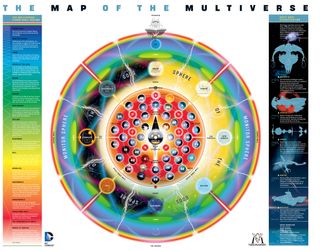
And while we haven't seen it much since the conclusion of Dark Nights: Death Metal, the Dark Multiverse is also still present in the Omniverse. The Dark Multiverse is somewhat akin to Earth-3. It features dark, twisted versions of familiar DC heroes and concepts.
A female The Batman Who Laughs made a recent appearance in the Justice League Incarnate series.
The Dark Universe remaining a presence is not much of a surprise given how it is still commercially ripe for versions of DC heroes and classic stories with a sort of perverse Elseworlds twist, although DC has yet to revisit that concept in any detail since Death Metal.
But don't be surprised to someday see DC heroes team up with their Dark Multiverse counterparts against an even greater threat.
That's kind of how comic books go.
And the Dark Multiverse was joined by another new wrinkle to the Omniverse - the Linearverse. Introduced in the January and February Generations: Shattered and Forged two-issue series, the Linearverse is more or less an alternative answer to the editorial necessity of a Multiverse.
It features a nearly identical Earth to Earth-Prime but on this Earth DC characters age very slowly, so the Superman and the Batman who debuted in 1938 and '39, respectively, are the same Superman and Batman of today who are chronologically 80-to-100-something years old but physically still young men in the prime of their careers. Those singular heroes experienced almost all of the adventures depicted in DC comics since their original appearances, without any multiple Earths/alternative timelines/Crises shenanigans.
We get into the mechanics of the Linearverse in greater detail here.
For you newer DC readers, we'd recommend checking out DC's own interactive Map of the Multiverse or the aforementioned The Multiversity: Guidebook.
5. Bring out your dead
As mentioned previously, not only are "some" of the characters that lost their lives during Death Metal alive, but DC has left the door open to just about any character who was dead now being alive.
"Not just those who fell in battle, but people who died before recent events…"
We dive into more detail about that revelation here.
The first such character who returned from the dead (who died before Dark Nights: Death Metal) is Roy Harper, who was killed by Wally West in Heroes in Crisis.
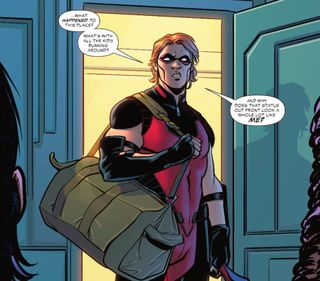
Roy has returned, and despite some questions about how alive he really was in the Infinite Frontier series, seems to a normal, living person again
And Roy's deceased daughter Lian is also alive again, but seemingly much older than the Lian who died as a child.
That said, despite it being mentioned as something of a significant development in the final pages of Dark Nights: Death Metal, DC hasn't really taken advantage of the death backdoor.
Besides Roy and Lian, there haven't been many to any previously deceased characters that have reappeared (sorry, fans of Alfred Pennyworth).
6. It all matters ... but how?
The finer mechanics of DC continuity/canon are either still to be defined or left open-ended on purpose, and as the months passed, open-ended on purpose seemed to be the intent.
As DC has already detailed, the result of Death Metal is that everything is now continuity in some respects.
The clear implication of Death Metal and Infinite Frontier was that hard reboots like the original Crisis On Infinite Earths and Flashpoint/'The New 52' are irrelevant and DC is no longer going to attempt to cram continuity into a cohesive timeline resembling the real world passage of time.
Barry explains to Wally in Dark Nights: Death Metal #7 that "the timeline was unknotted once and for all and all our memories returned."
Hawkgirl then explains to Wally that Hypertime is healing and that characters will likely experience flashes of events that happened in Hypertime and alternate pasts "in pretty epic fashion."
Infinite Frontier #0 also contains exposition suggesting DC characters are now more whole, that legacy taken away during the 'New 52' along with their belief in themselves has been restored.
For the moment, this is all very meta-textual and hasn't been defined in a specific way nor have any characters experienced what Hawkgirl described.
The DC Universe has more or less moved on from those conceptual ideas to new storylines not much different in scope and nature than previous to Dark Nights: Death Metal-the Infinite Frontier "era."
Unlike the Linearverse, which DC says is its own specific thing and does not represent the core timelines, how the lives of the 'current' Superman and Batman and Flash, etc. are distinguished between the lives of previous versions - meaning how or if a narrative canon that does not rely on the Linearverse conceit of heroes that age slowly is established remains to be seen, if those questions will ever be answered.
Will every major DC character essentially become Hawkman - a complex conglomeration of past lives?
Somewhat subtly, DC seemed to be dropping clues with a wink and a nudge that the Linearverse version and the core continuity version of the DCU are similar. Whereas the Linearverse spelled out the aging/timeline issues specifically, the DCU is kinda-sorta saying everything happened to the core characters too just like in the Linearverse, it's just no longer trying to explain exactly how.
For a while, after 35 years of being preoccupied with making its continuity make sense in a real-world timeline, DC seemed to want readers to decide for themselves how the puzzle pieces fit together and how those questions are answered, or if it matters to you if they fit together or are answered at all.
Dark Metal's meta-elements may by design have been more of a way to stop having to answer those questions at all rather than provide any specific answers to them.
But there's been a new development that might eventually shed light on this topic.
The DC Omniverse has a new biggest bad (spoilers for Justice League Incarnate #4)
While post-Dark Nights: Death Metal it appeared DC was reestablishing the leveled-up Darkseid as the Omniverse's most dangerous threat … "Darkseid is ... the end" (as he says in Infinite Frontier #0) … it turns out there is something worse than the end - nothing at all
That's how DC is rebranding the Great Darkness, a concept first introduced in the seminal Legion of Super-Heroes: The Great Darkness Saga, as a nihilistic entity that's been behind all the significant threats to the DC Multiverse and now Omniverse since well, forever, retroactively speaking, of course.
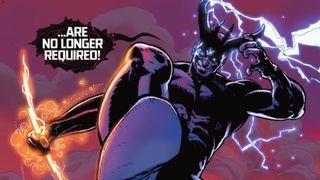
In other words, before there was a multiverse, there was nothing at all, and as explained in February 1's Justice League Incarnate #4, the sentient (and badass) embodiment of that absolute nothingness the Great Darkness has been trying to get back to that original state for all time, with brand name DC villains like Darkseid, the Anti-Monitor, Superboy-Prime, the Batman Who Laughs/Darkest Knight, and even Watchmen's Doctor Manhattan all being unwitting pawns in its schemes.
But the Omniverse has a natural immune system defense; antibodies to fight off being returned to nothingness - meaning superheroes, of course, and specifically the "prime" versions of superheroes on Earth-0/Prime.
Interestingly, this brand-new rejiggering of DC Crisis and significant events reads as something of another and the latest attempt by the publisher to make its long and often confusing and contradictory history all fit together as part of a single narrative, somewhat in contradiction to what seems like a more meta and laissez-faire stance on canon/continuity in the wake of Dark Nights: Death Metal.
So at the moment, it seems like this could go either way and that the new upcoming major 'Dark Crisis' expected this summer featuring the Great Darkness will very likely be DC's next meta-event to address some of these issues.
Death Metal was what Scott Snyder calls an anti-Crisis. Check out all of DC’s Crises from best to worst.
I'm not just the Newsarama founder and editor-in-chief, I'm also a reader. And that reference is just a little bit older than the beginning of my Newsarama journey. I founded what would become the comic book news site in 1996, and except for a brief sojourn at Marvel Comics as its marketing and communications manager in 2003, I've been writing about new comic book titles, creative changes, and occasionally offering my perspective on important industry events and developments for the 25 years since. Despite many changes to Newsarama, my passion for the medium of comic books and the characters makes the last quarter-century (it's crazy to see that in writing) time spent doing what I love most.
